The Best Gaming Monitors to Help You Crush the Competition
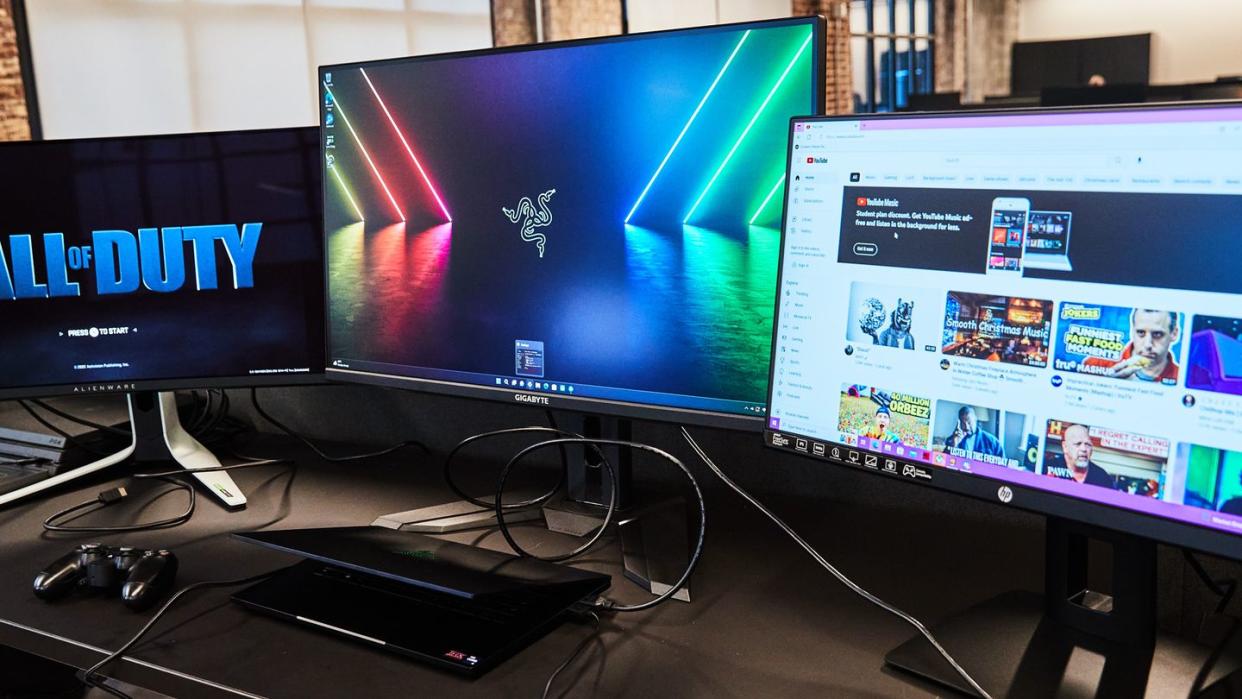
"Hearst Magazines and Yahoo may earn commission or revenue on some items through these links."
A great monitor can revolutionize your gaming experience. From deeper colors and contrast that make every moment a visual feast, to high refresh rates that eliminate motion blur and give you a competitive edge, your monitor gives your gaming PC or console the ability to turn raw computing power into the best-looking version of your favorite games. We’re here to break down exactly what to look for and pick the best gaming monitors so you can spend less time shopping and more time playing.
For PC Gamers, It’s Always Time To Upgrade: Best Gaming Keyboards ● Best Gaming Mice ● Reddit's Favorite Gaming Laptops
The Best Gaming Monitors
Best Overall: MSI MEG 342C QD-OLED
Best Value: Gigabyte GS27F
Best 4K: Sony Inzone M9
Best Curved: Samsung Odyssey Neo G7
Best Ultrawide: Alienware AW3423DWF
The Expert: I’ve been a PC gamer for more than 25 years, starting in the dark ages of floppy disks and dial-up internet. I began building computers in the early 2000s and have been on a constant pursuit to find the best gaming tech ever since. Professionally, I’ve covered tech for nearly a decade at publications like Tom’s Hardware, Reviewed, and Popular Science. More specifically, I’ve reviewed monitors extensively for IGN and MMORPG.com. I know what makes a great gaming monitor and how to cut through the industry buzzwords and hone in on what matters most.
What to Consider in a Gaming Monitor
Panel Type
It’s easy to forget that the display panel, the screen that generates what’s happening on your PC, is only a part of your monitor. Different display types have unique strengths and weaknesses, excelling at different things. Every display type will work with every machine, but picking one based on display type can help you optimize the visual performance of your games and beyond.
In-Plane Switching (IPS) is the most common panel type used in gaming monitors. IPS monitors offer rich colors and wide viewing angles, but often suffer from reduced contrast due to their prominent backlight.
Twisted Nematic (TN) panels showcase speed above all else. Their colors are comparatively dull and their viewing angles are mediocre. They are still used occasionally in high-refresh-rate monitors for competitive esports, such as the Zowie XL2546X. I’d generally steer clear of them at this point.
Vertical Alignment (VA) panels offer a middle-ground between IPS and TN, featuring better contrast than IPS monitors and better colors than TN. Like IPS, they work best on lower frame rates. They tend to be a popular choice in affordable gaming monitors.
Organic Light-Emitting Diode (OLED) technology is popular in high-end TVs, and are starting to make their way into top-of-the-line gaming monitors. OLED panels can adjust the brightness of each individual screen pixel, or turn it off entirely. This allows for better contrast, vivid colors, and responsive visual fidelity. OLED monitors are more susceptible to long-term “burn-in” damage, where ghost-like after-images get “stuck” on the screen, but manufacturers often include safeguards to prevent it.
Mini-LED is a backlighting technology that you may find in high-end monitors that enhances the contrast and brightness of any kind of panel. It uses an array of hundreds of tiny lights that can be controlled in groups. It makes games brighter and sharper, while improving the impact of high-dynamic range (HDR). On the other hand, it can cause a blooming effect in some cases, creating a dim halo around light objects in dark scenes.
Quantum Dots (QD), like mini-LED, are an enhancement that can be applied to different display types. This technology adds a layer of microscopic dots inside the display to enhance brightness and color representation. (Like OLED displays, you may know quantum dots from their more prominent role in QLED TVs.) This enhancement often goes hand-in-hand with OLED monitors, though you may find it elsewhere. Regardless of the panel, it’s always a worthwhile investment.
Screen Size and Resolution
Most gaming monitors range from 23 inches to 32 inches. While picking the right size for you ultimately comes down to a matter of taste, every setup has a sweet spot based on the expected performance on your PC, and how far you plan to sit from your monitor.
Keep in mind that you should be able to take in every part of your screen without moving your head to prevent neck and eye strain. You sit much closer to your monitor than you would a TV, so buying the largest possible monitor may be overkill.
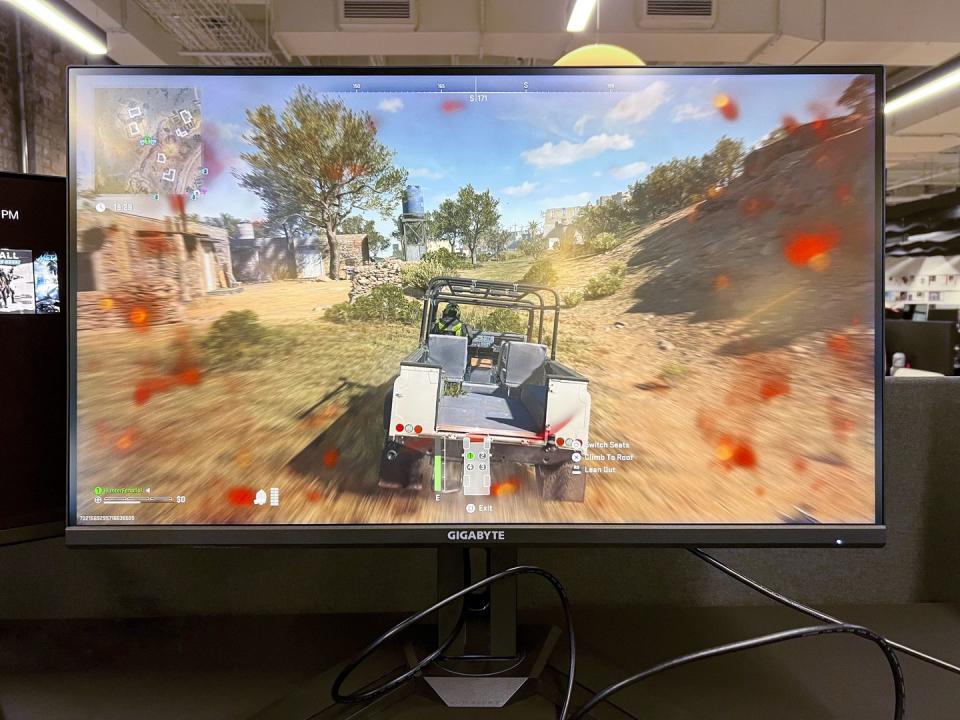
You should consider the optimal size and resolution of your monitor as two sides of the same coin. Resolution, or the number of pixels used to generate your monitor’s picture, dictates how sharp your games will look. A monitor with more pixels will output more detailed games but a larger screen will stretch whatever number of pixels you have across a wider area. In other words, the larger your monitor, the more important it is that the monitor (and your computer) can support higher resolutions.
Luckily, there’s an easy rule of thumb to follow for this. In 2024, there are three common screen sizes: 24 inches, 27 inches and 32 inches. There are also three standard resolutions: 1080p (1920 x 1080 pixels), 1440p (2560 x 1440 pixels), and 4K (3840 x 2160 pixels).
To find the best balance between performance and price, simply pair the small, medium, and large versions of both lists: If you’re gaming at 1080p, a 24-inch monitor will give you enough pixels to produce a sharp picture. 1440p looks great on a 27-inch monitor. For 4K, a 32-inch monitor offers a great balance between screen size and pixel density. There are always exceptions, of course, especially with ultrawide and curved monitors, but using this as a guide can help you find value in any display.
Refresh Rate
“Refresh rate” refers to the number of times your monitor gets a signal from your PC and redraws what’s happening on-screen, bringing your games to life.
Standard productivity monitors refresh about 60 Hertz (Hz), which translates to 60 times per second. For gaming, a higher refresh rate means smoother animations, quicker reaction times and reduced motion blur. That means higher is generally better. A good monitor should be able to hit at least 120Hz, and high-end esports monitors can go to 500Hz.
Remember, your ability to play games at higher frame rates is actually dictated by your PC’s CPU and GPU: The monitor merely sets the upper limit for what is possible. You should only buy a monitor that enables the best performance your system will allow.
Brightness and HDR Support
Brightness is one of the most important attributes of any gaming monitor. Measured in nits of cdm/2 (candela per square meter), a brighter monitor is more vibrant and colorful, and is easier to see in rooms with direct sunlight. A high-performance gaming monitor should be capable of achieving anywhere between 600 and 1,000 nits. A more budget-conscious monitor should offer a maximum brightness of at least 300 nits.
Brightness and high-dynamic range (HDR) go hand-in-hand. HDR is a monitor technology that allows a monitor to display brighter highlights and deeper blacks, presenting a much richer, more detailed image. Monitors need to be exceptionally bright to provide the best performance across a range of in-game lighting conditions.
Generally speaking, you need at least a peak brightness of 600 nits or more to achieve a “true” HDR experience that can generate enhanced detail in the brightest and darkest areas of the screen. Many monitors above that spec feature “VESA True Black” and/or “VESA Display HDR certifications, which means they meet specific standards for brightness, contrast, and color rendition.
Not all HDR is created equal: Many manufacturers include the technology in budget monitors that don’t offer the specs to create enhanced contrast. I strongly recommend ignoring monitors with “HDR400” branding, which are “compatible” with HDR content but can’t deliver enough brightness to make it a meaningful addition.
What About a Curved Display?
Many players prefer using a curved monitor for gaming, which enhances your immersion in a game by creating a cockpit-like effect that wraps the screen around you. Different monitors feature different curve depths, measured by radius (R). The lower the number, the greater the curve. A 1000R monitor features a deep immersive curve while an 1800R monitor is very gentle. No matter the depth, the purpose of a curved monitor is the same: to create a sense of depth to the viewing experience.
It sounds magical on paper, but curved displays are a polarizing topic among PC players. Some people swear by them, while others find the bend distracting. When in doubt, we recommend finding a way to test a curved display for yourself, either in a store or on a friend’s setup, before buying one.
How We Selected The Best Gaming Monitors
To select the best gaming monitors, I consulted reviews and references from product experts across the internet, including sites like Tom’s Hardware, RTings, and TechSpot. I researched product launches through the last two years, comparing technical specifications and details.
I’ve had hands-on experience with sibling models to multiple picks in this list (like the Alienware AW3423DWF, AOC C24G1A, and Gigabyte GS27F) and used that knowledge to assess fit, feel, and usability wherever there was crossover. For everything else, I chose standout picks based on my general expertise and user reviews on message boards and online communities.
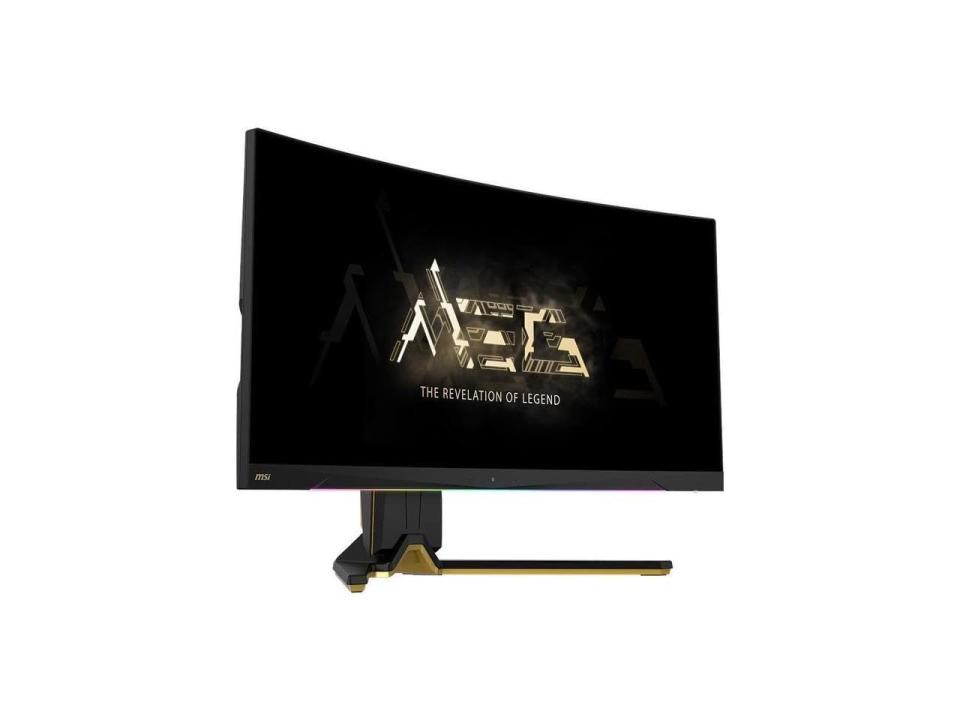
MEG 342C QD-OLED Gaming Monitor
amazon.com
$899.99
More and more manufacturers are putting OLED panels in their elite flagship gaming monitors, and the MSI 342C MEG is simultaneously one of the best and most affordable you can buy. I love its rich blend of performance and features, which offers rich, vivid colors, strong brightness, and incredible contrast.
Its 34-inch ultrawide screen is spacious and crisp thanks to its 3440 x 1440p resolution, with quantum dot-enhanced colors and brightness. It is also one of only a handful of gaming monitors to receive VESA’s highest motion clarity certification, ClearMR 9000, which promises the absolute highest level of clarity for gaming.
The MEG 342C is not the only monitor to offer these core specs, so the difference is in the details. It has a USB hub that’s perfect for connecting peripherals and sports a Type-C port to both charge and receive video from a laptop. Ambient light and environmental noise sensors dynamically adjust the screen’s brightness and block noise from making its way into your mic. Support for HDMI 2.1, the latest version of the spec, allows you to play console games in 4K at 120Hz. It also has a stylish look and a little RGB strip on the bottom for flair.
Since its release, it can also frequently be found on sale for less than $1,000, making it even more appealing.
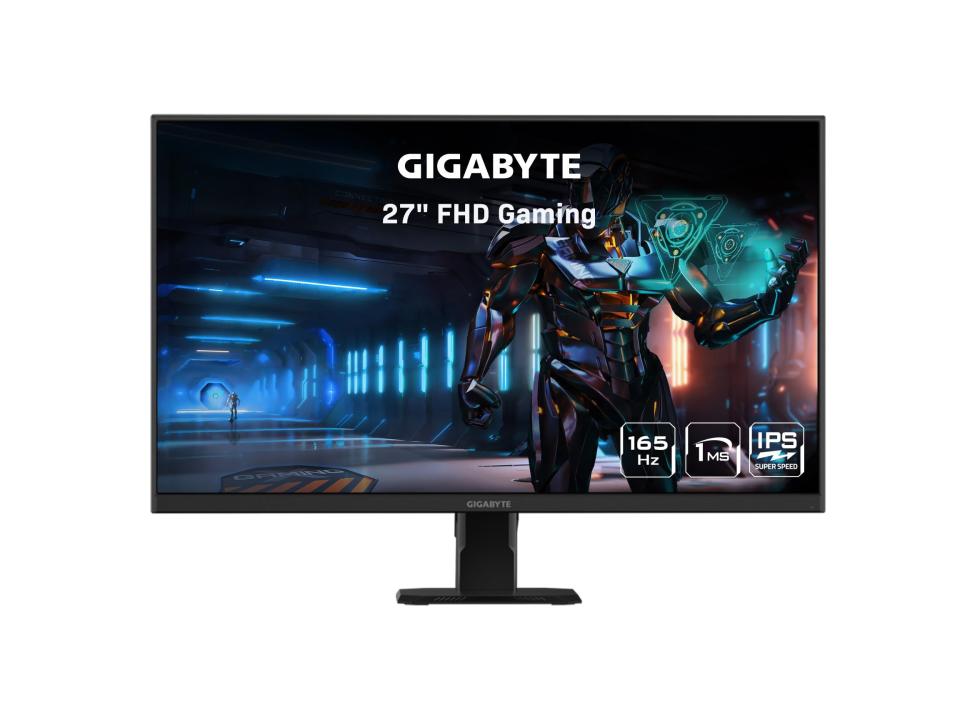
GS27F Gaming Monitor
amazon.com
$169.99
Strictly speaking, the Gigabyte GS27F isn’t the cheapest gaming monitor you can buy, but it’s far cheaper than any other monitor I’d recommend, and when you look at what you’re getting, it’s hard to deny that it’s a good deal. It isn’t the most powerful monitor–Its resolution and brightness are relatively low for a 27-inch display–but it’s fast enough to keep up with competitive play and still delivers rich colors and wide viewing angles at up to 175Hz.
Its final winning feature is an unexpected one: Its on-screen display (OSD). I rarely talk about built-in monitor menus unless there’s a problem, but the GS27F’s OSD Sidekick software offers a set of powerful gaming-minded features to give you an edge in competitive play. The “Black Equalizer” setting raises the blacks to let you peek into the shadows. The “Aim Stabilizer” reduces blur when firing. An on-screen reticle is available for any game, even those that don’t offer one of their own.
While other monitors also have these features, OSD Sidekick allows you to assign them to a hotkey so you can toggle them on and off on the fly, which makes them far more useful than what you’ll find elsewhere. It’s a diamond of a feature hidden in a highly affordable sub-$200 monitor.
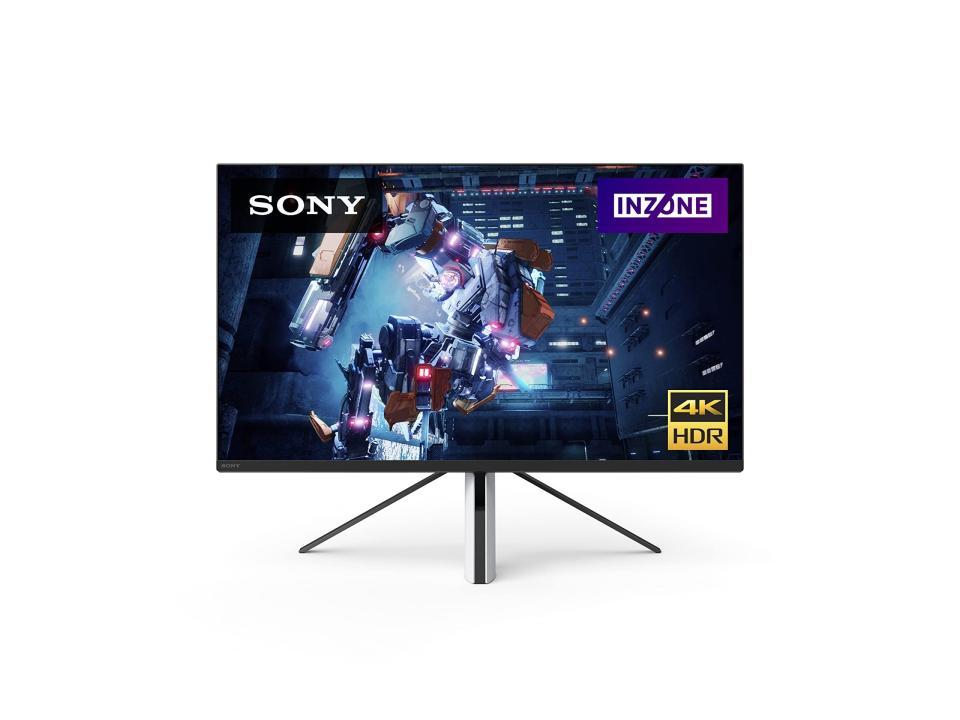
Inzone M9 Gaming Monitor
amazon.com
$698.00
The Sony Inzone M9 is a versatile 4K gaming monitor that works well for PC and PS5 players. It’s brighter than most LED monitors this size, peaking at 600 nits, and offers full-array local dimming for great HDR performance. It’s also fast and fluid with a 144Hz max refresh rate and support for both AMD FreeSync and Nvidia G-Sync to keep your games looking smooth. With dual HDMI 2.1 ports, console players can connect both PlayStation 5 and Xbox Series X to play in 4K at 120Hz with zero compromises.
Paired with a PlayStation 5, you get other benefits competing monitors don’t offer, like Auto-HDR Tone Mapping. This feature pre-configures HDR settings so you can focus on enjoying your game instead of fiddling in a menu. Unfortunately, it’s limited to PS5, so this feature won’t work with your gaming PC.
The Inzone M9 is a tad expensive, but with picture quality, performance, and features like these, it separates itself from the competition in the best ways.
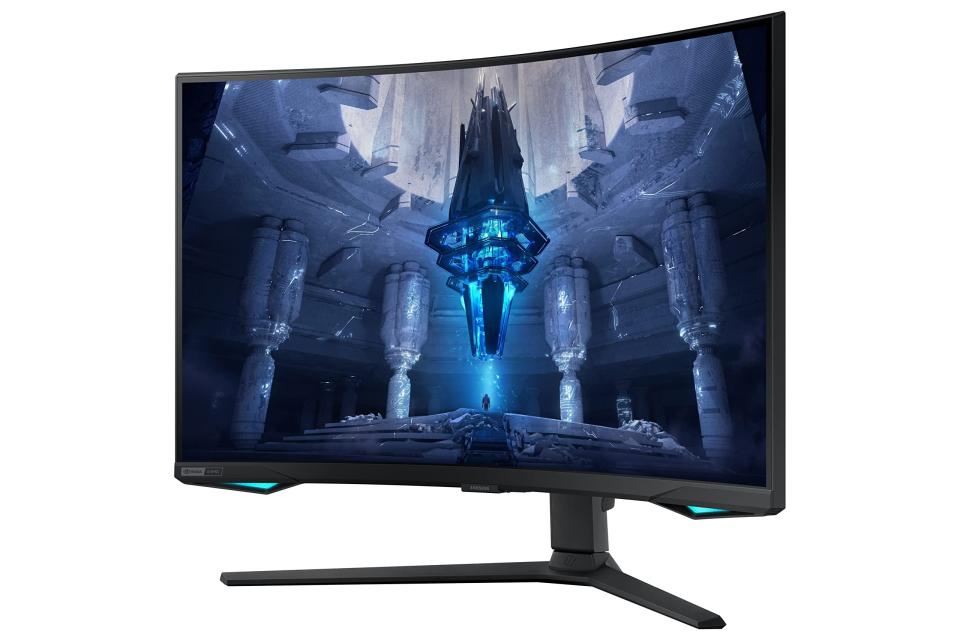
Odyssey Neo G7 Gaming Monitor
amazon.com
$965.00
If you crave a curved gaming monitor, the Samsung Odyssey Neo G7 creates a cockpit-like gaming experience. It features a 1000R curved panel, among the deepest you can find in a display, to create the most immersive experience possible. The 32-inch 4K mini-LED VA panel can get ridiculously bright, up to 2,000 nits, for even better dynamic range with HDR content. With more than a thousand local dimming zones, it also offers incredible contrast and superb range for next-level HDR content.
If you’re not sold on the promise of a more immersive gaming experience, the Neo G7’s responsiveness is its next quality. It can hit up to 165Hz, with reduced motion blur and input delay, so your mouse clicks feel instantaneous. You can count on the exceptional detail necessary to maintain every edge in your favorite game. Or just enjoy Netflix in 4K UHD. It’s great for that too.
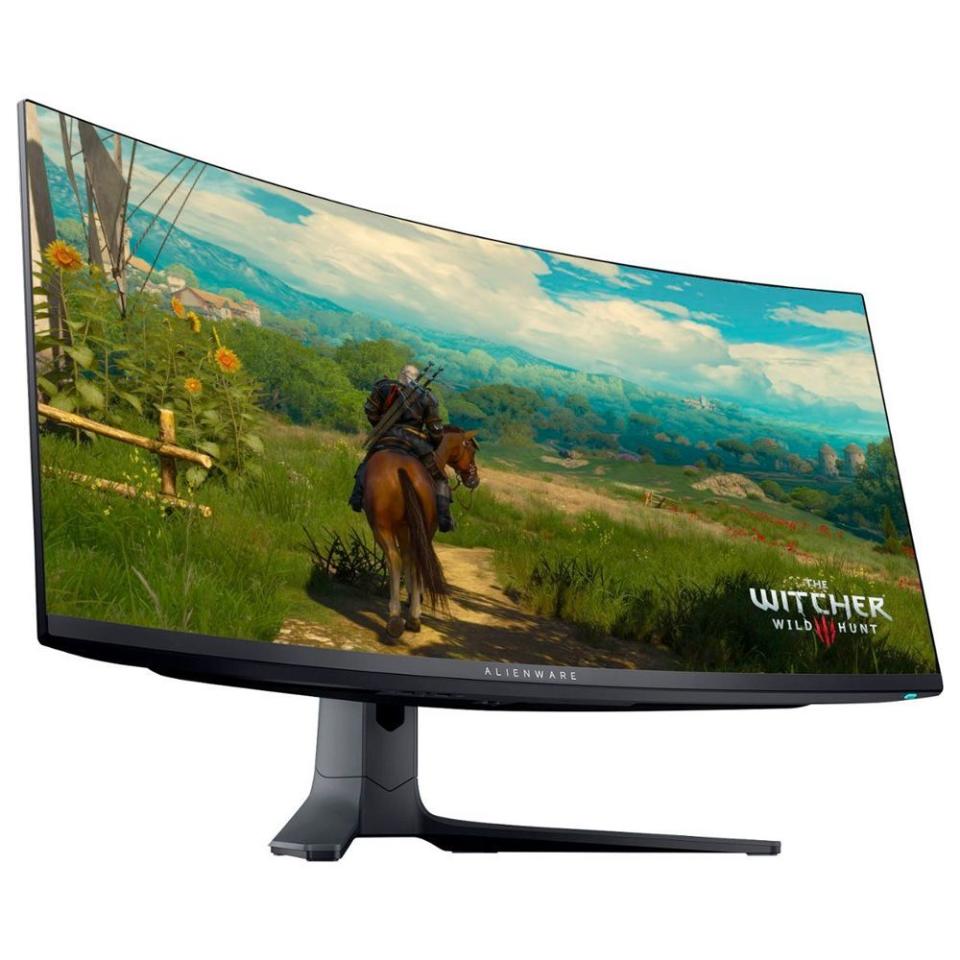
AW3423DWF Ultrawide Gaming Monitor
bestbuy.com
$899.99
Back in 2022, the Alienware AW3423DW ultrawide QD-OLED stopped me in my tracks. Its stunning picture, excellent colors and deep blacks sold me on OLED gaming monitors. Its successor, the AW3423DWF, loses the Nvidia G-Sync chip, but comes in around $100 cheaper without fully ditching G-Sync compatibility.
It also features the same gorgeous QD-OLED panel. Straight out of the box, it offers one of the most vivid OLED viewing experiences you can have on a gaming monitor thanks to its great factory calibration.
Outside of gaming, it delivers superior text clarity. Ultrawide monitors are fantastic for both work and play, and staring at this screen won’t give you a headache when you need to buckle down.
Like all OLEDs, it’s ridiculously fast and renders ghosting (blurry after images in games) a thing of the past. Its max refresh rate is just a hair slower than my top pick, but it’s a comparable option.
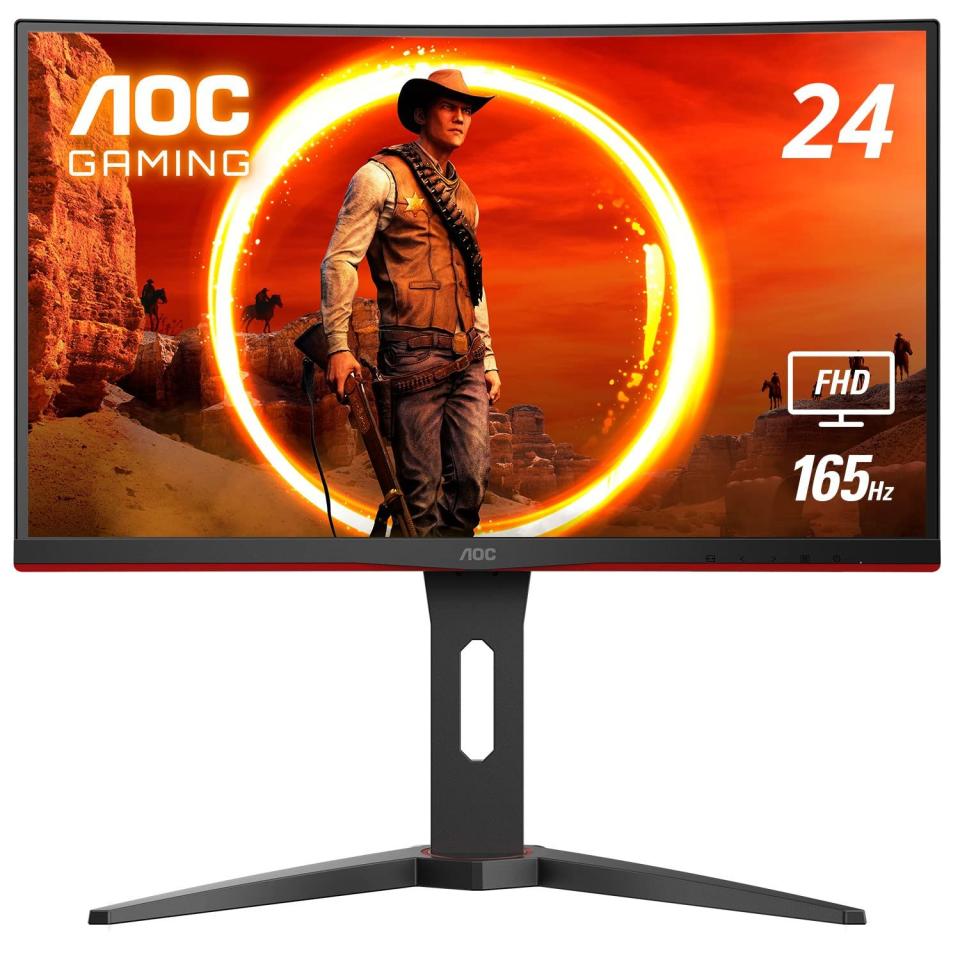
C24G1A Gaming Monitor
amazon.com
$149.99
Like our best value pick, the AOC C24G1A is an incredible steal for price-conscious players. For less than $200, this 24-inch, 1080p monitor makes games running on affordable hardware look perfectly crisp. Its VA panel allows for improved contrast compared to competing IPS panels. And with a 165Hz refresh rate, you’re free to pursue smooth animations at low settings on less graphics-intensive games.
Given its affordable pricing, it’s reasonable to assume that many gamers considering it will be running similarly affordable graphics cards. That’s where its other killer feature comes in: Low frame rate compensation. When your FPS drops below a certain threshold, the display will automatically swoop in and double frames to keep your gameplay smooth and consistent.
The C24G1A is a perfect starter display for new PC players, or a budget-conscious option for low-end GPUs. If you have a powerful system, it may hold you back, but many players will find that it has just enough firepower to make your games shine.
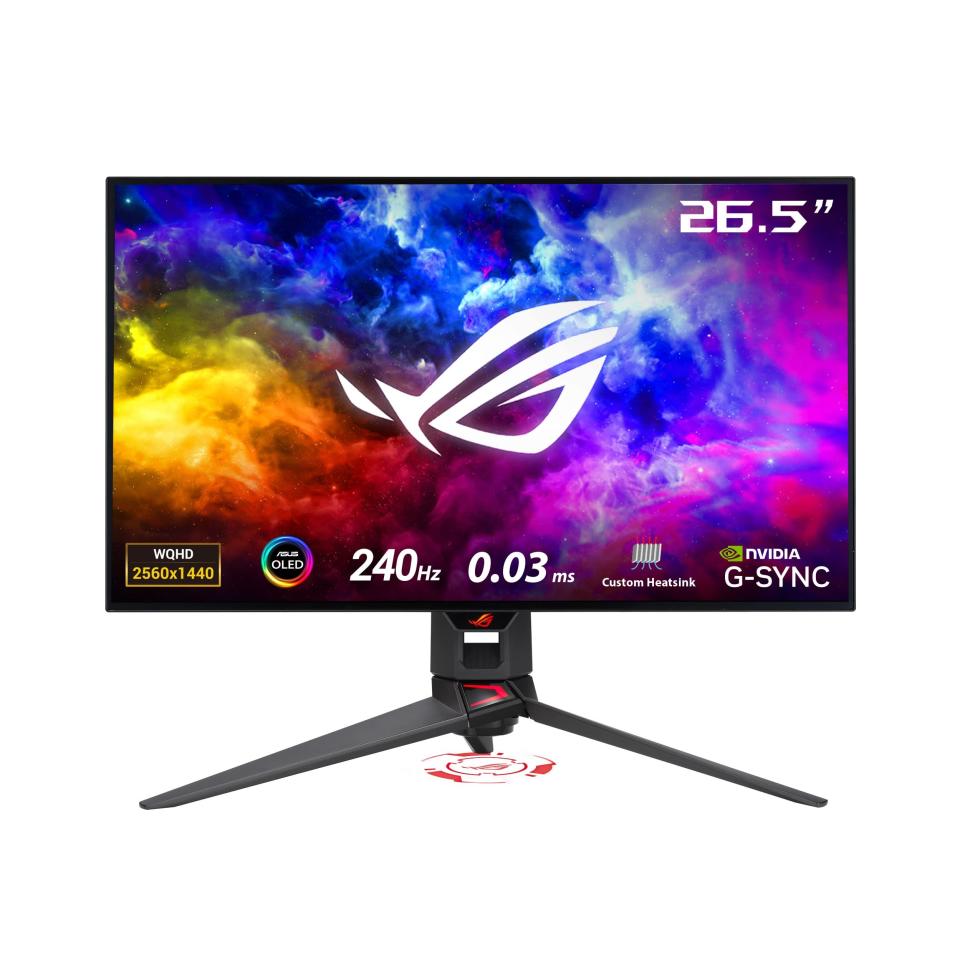
ROG Swift PG27AQDM Gaming Monitor
amazon.com
$899.00
Asus’ ROG, short for “Republic of Gamers,'' has become a go-to brand for high-end PC gaming gear, and the PG27AQDM is a perfect example of what draws players back again and again. It offers fantastic OLED picture quality with vivid colors, incredible responsiveness and great motion clarity. It also comes with advanced features like an esports-grade 240Hz refresh rate, and an anti-glare finish that effectively minimizes distracting reflections.
OLED gaming monitors tend to share many of the same qualities, like great colors and infinite contrast. They also share the same risk of burn-in and low SDR peak brightness. The PG27ADQM mitigates the risk of burn-in with all of the usual methods, like pixel shifting, but features an internal design centered on protecting the panel. A custom heatsink and voltage management system limits heat and power, two of the key factors leading to burn-in. The last thing you want is your new monitor showing the ghosts of games past, and with this display, it’s less of a risk than ever.
On top of all that, it’s designed to become a showpiece on your desk with a nearly frameless design, a heavy-duty stand with a downfiring lamp to project a logo onto your desk, and a massive RGB logo on its rear. It has the looks, it has the build quality, and it has the performance, making this the clear pick if you’re shopping for a top-of-the-line 27-inch monitor to complete your setup.
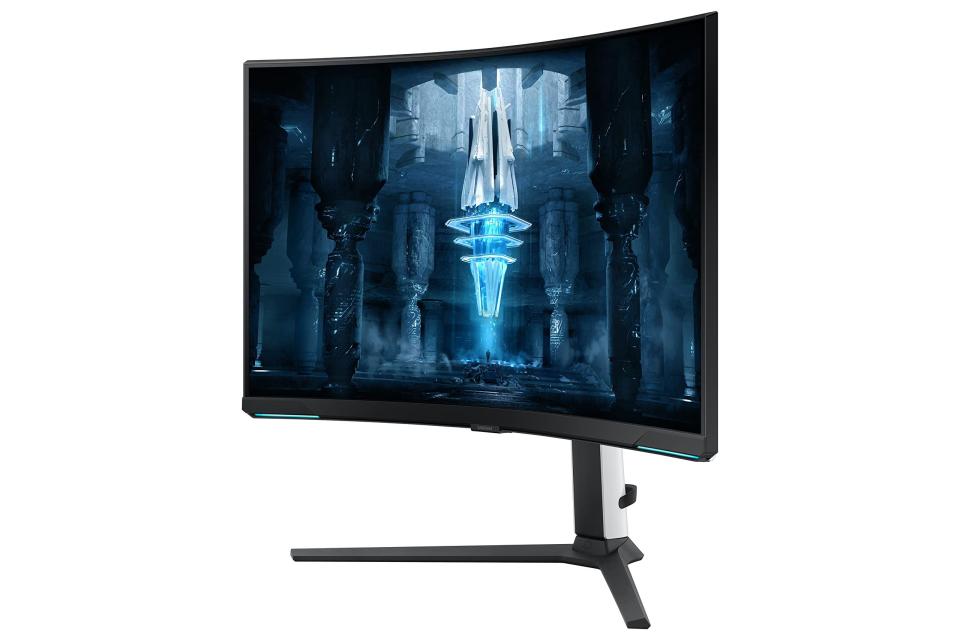
Odyssey Neo G8
amazon.com
$899.99
If you’re looking for a big monitor, but don’t want to jump to a TV replacement, 32 inches is the sweet spot. Among these massive desktop displays, the Samsung Odyssey Neo G8 currently sets the gold standard. Like the Neo G7, my top curved pick, the Samsung Neo G8 features a 4K curved display backed by mini-LED technology for an incredible 2,000 nits of peak brightness. It has just under 1,200 local dimming zones to ensure that blacks are deep and rich and that HDR-enabled games come to life on its screen.
It also features the same deep 1000R curve, but that can be a double-edged sword. Reviewers found they had to position themselves perfectly– centered, 2- to 3 feet away–to see the screen properly, but it looks glorious when you set yourself up just right. Some users have also reported experiencing scan lines at 240Hz but many have found that it’s invisible in games where that refresh rate is most useful and that it disappears entirely at 120Hz.
Even with these potential shortcomings, there are few monitors that can match the incredible specs and performance in Samsung’s Neo line, making this an obvious choice if you’re looking at 32-inch gaming monitors.
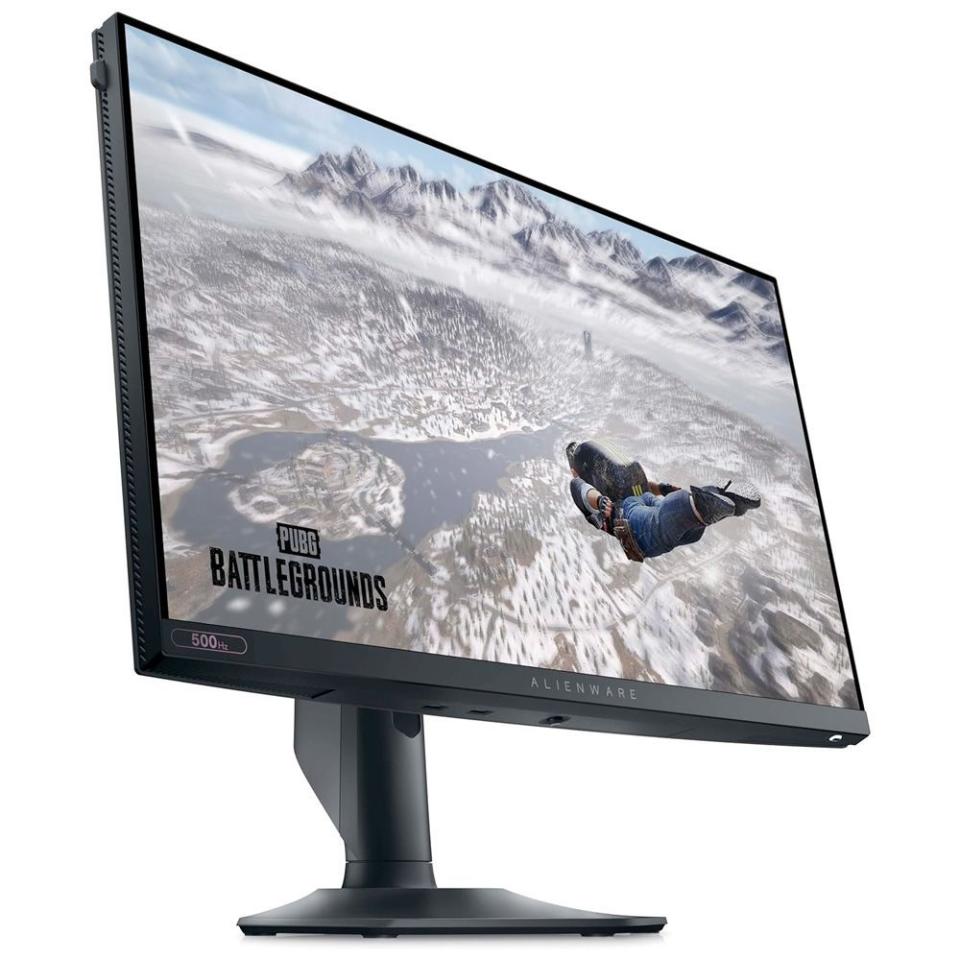
AW2524HF Gaming Monitor
amazon.com
$544.99
If you’re a competitive esports player, every advantage matters. The Alienware AW2524HF is one of the first 500Hz gaming monitors, offering the highest refresh rate you can find right now. Dell outfitted this monitor with AMD FreeSync Premium (variable refresh rate) technology, so games will stay smooth and tear-free, giving you every clarity advantage possible when winning matters the most.
This monitor is optimized for speed, and that comes with some significant trade-offs. It’s only available in a smaller size with 1080p resolution. Luckily, 1080p looks great on a 25-inch screen, and its IPS panel produces rich and engaging colors. If speed and reaction time are your top priorities, the AW2524F is the reigning champ.
Q+A with Computing Expert Chris Coke
Do I Need a 300Hz Monitor?
Refresh rates get higher with each passing year, which makes it more complicated than ever to figure out what you actually need. 300-500Hz gaming monitors make up the high end of the spectrum, and cost a pretty penny because of it. For highly skilled competitive players, the highest possible refresh rates offer lower response times and improved motion clarity for first-person shooters.
For everyone else, though, it may not make a meaningful difference. Unlike the jump from 60Hz to 144Hz, which you can see in many games as they animate more smoothly, jumping from 144Hz to 300Hz offers only subtle differences. Your games probably won’t look much different, but you find yourself taking them in differently.
If you’re currently using a 60Hz monitor, there’s no harm in going directly to 300Hz if you have competitive aspirations. For most players, though, I’d recommend looking for a balance between screen size, resolution, refresh rate and other factors to find a monitor that makes your games look great.
Do I Need a 4K monitor?
Ultra HD resolution is more accessible than ever, and you don’t have to spend a tremendous amount to get your fix. That said, gaming in 4K is demanding, even for a powerful gaming PC, so you’ll need a high-performance graphics card to run games effectively at such a high spec.
To play in 4K, I recommend using at least an RTX 4070 Ti from Nvidia or a Radeon RX 7800 XT from AMD (or their equivalent cards from earlier generations). If your system is up to snuff, 4K monitors can deliver some of the most visually appealing gaming experiences it’s possible to have.
How important is HDR on a gaming monitor?
High-dynamic range has had a troubled life on Windows, but HDR support for games has steadily improved over the years. With technologies like Mini-LED and OLED becoming more common, it only stands to improve more with time. Many of the biggest and best games support it but not all.
More importantly, HDR requires a monitor with better-than-average brightness and contrast, so it’s only available in mid-to-high-performance displays. Investing in a monitor that is HDR600+ or HDR True Black certified is great way to future-proof your system and ensure you’ll be able to enjoy beautiful, HDR gaming content for years to come, but for the here and now, we recommend considering whether the games you play support it and if it makes sense for your budget.
You Might Also Like

